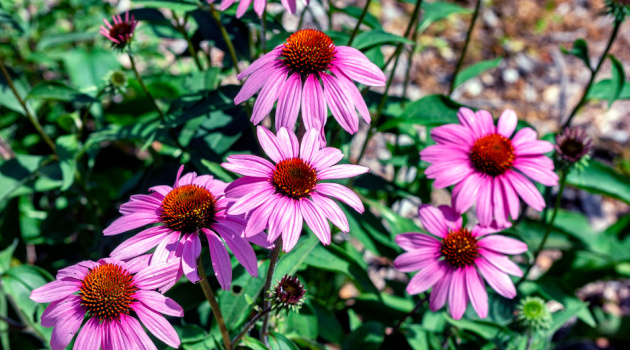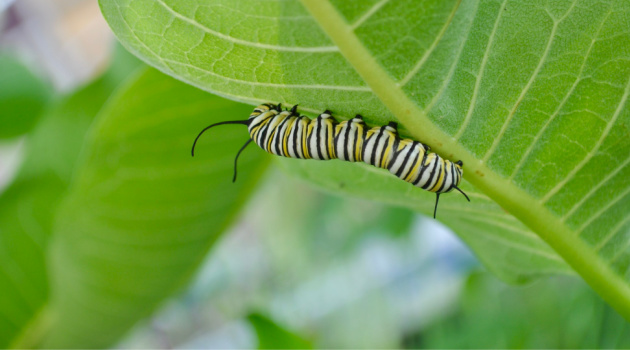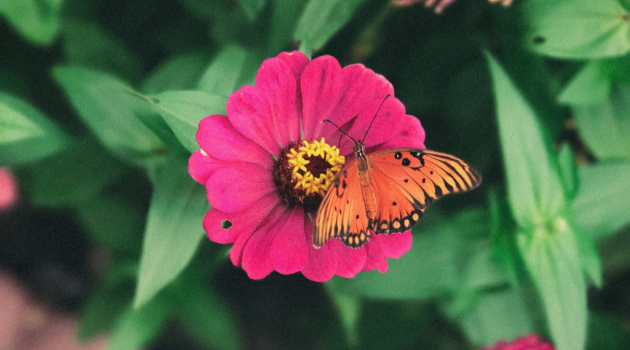Do you wish to grow a stunning butterfly garden to watch all summer long?
Well then. You are not alone!
In the world of gardening, butterflies are a revered lot. They are great pollinators and are quite beneficial to the ecosystem. However, I’m pretty confident I’m echoing the thoughts of a lot of people when I say the biggest benefit of the butterfly is its sheer visual beauty. So, if you want to be eco-friendly and also bask in the wonder of watching butterflies flit around your butterfly garden, then having these five plants is a definite must.
Coneflowers (Echinacea spp)
Butterflies love nectar, and the coneflower family provides it in abundance. There are about 9 different species of coneflowers in existence, the most popular being the purple coneflower (Echinacea purpurea). Other common species include the yellow coneflower (Echinacea paradoxa) and the pale purple coneflower (Echinacea pallida). These flowers all possess brightly colored petals, can grow up to a height of 4 feet, and are capable of spanning an existence of more than two years.

Milkweeds (Asclepias spp)
As one writer elegantly said, butterflies are fussy about what they eat. Who can blame them? If I looked that pretty, I would be fussy too. Baby butterflies (caterpillars) feed on the leaves of specific plants, and the milkweed flower ranks really high on that food list. With over a hundred species of milkweed, the Asclepias family provides you with a wide variety of options to choose from. Most gardeners however prefer the common milkweed (Asclepias syriaca), as its leaves are notably larger and thicker than others.

Goldenrods (Solidago spp)
Butterflies are attracted to bright, splashy colors and the vivid yellow of the goldenrod flower is no exception. Goldenrods are a veritable nectar source, making them huge favorites of the butterfly family. The plant is also brimming with pollen and this makes it very easy for butterflies to greatly contribute to the pollination process. Basically, with the goldenrod flower, it’s a win-win situation for everyone involved.
Joe-Pye Weeds (Eutrochium spp)
The Joe-Pye weed is a living paradox. Technically speaking, weeds are unwanted plants but the Joe-Pye weed is actually desired by gardeners. With sweet nectar and pale pink-purple flowers, this ‘weed’ is both an appealing and tasty dish for butterflies. It is actually quite tall, being able to achieve a maximum height of 12 feet. The Joe-Pye weed has various species with the three most common ones being the Eutrochium purpureum (sweet Joe-Pye weed), Eutrochium maculatum (spotted Joe-Pye weed), and Eutrochium fistulosum (hollow Joe-Pye weed).
Zinnia (Zinnia spp)
There are over 20 species of flowers in the zinnia family and while this is no mean feat, the true uniqueness of the zinnia family is the huge variations shown by these species. A plant can have flowers of different shapes, colors, and appearances. The most popular of these is the Zinnia Elegans reputed to be a garden favorite and butterfly magnet. It is easy to grow, provides adequate nectar, and comes in all sorts of eye-catching colors.
As an added bonus, youmight also see more hummingbirds if you plant zinnias.

The Takeaway: Do Your Homework, Then Choose Your Favorite Flowers for an Attractive Butterfly Garden
I feel it is important to point out that while there are several plants out there that attract butterflies, this article showcases my preferred list. Of course, you might feel differently and your opinions may vary from mine. As we all know, there is no rigid rule or singular method of gardening. It’s imperative you have fun, experiment, and let your instincts guide you. So, if at the end of the day, you prefer asters and violets to milkweeds or you’d rather go with ironweeds than Joe-Pye weeds or goldenrods, there really is no problem. Go right ahead and plant them, then relax and watch those pretty little butterflies swarm right in.

